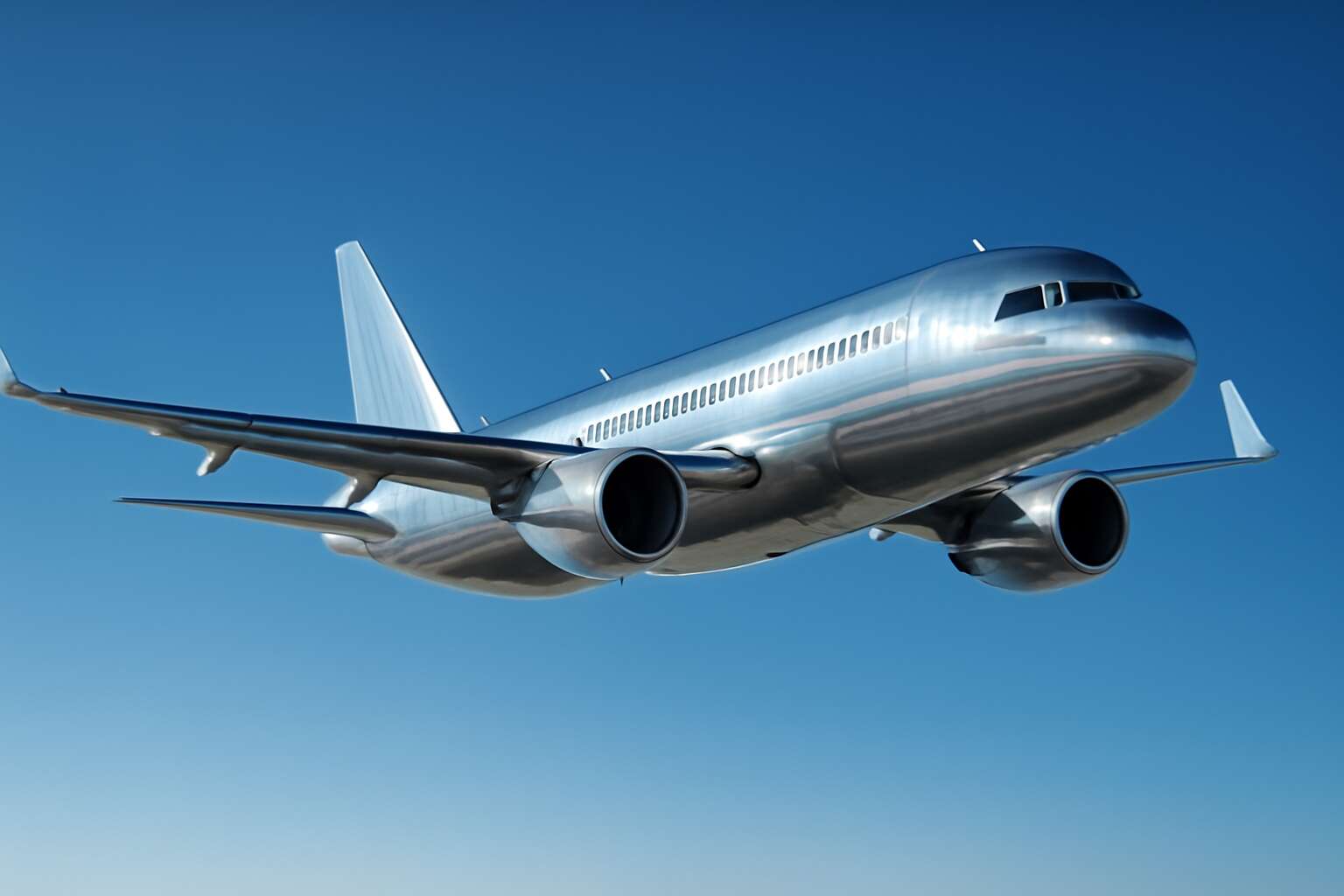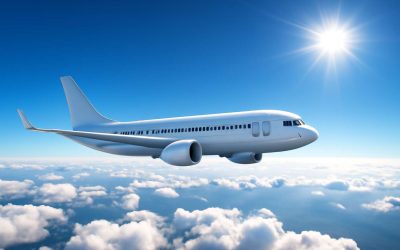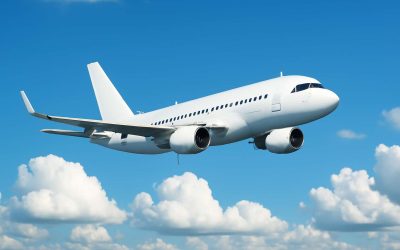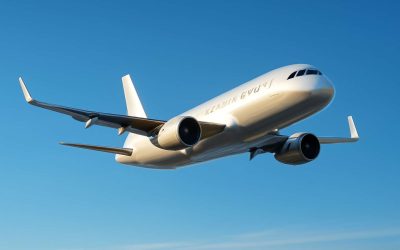Main Metals Used in Airplane Construction
Aluminum Alloys – Properties and Usage in Aircraft Manufacturing
When pondering the question of what makes your favourite aircraft soar through the skies, the answer often surprises people: it’s primarily aluminium alloys. Yes, those lightweight, corrosion-resistant marvels are the backbone of aeroplane construction, allowing planes to achieve remarkable fuel efficiency and agility.
Aluminium alloys possess a unique blend of properties that make them ideal for the rigours of flight. Their exceptional strength-to-weight ratio means that aircraft can stay light without sacrificing structural integrity. Furthermore, aluminium’s natural resistance to corrosion keeps those high-flying machines in top shape despite relentless exposure to moisture and varying weather conditions.
In addition to aluminium, other metals contribute to the complex architecture of aeroplanes, including titanium and high-strength steel. However, when it comes to the question of aeroplanes are made of which metal, aluminium alloys unquestionably take centre stage — making them the true unsung heroes of the skies!
Titanium Alloys – Advantages for Structural Components
Among the myriad materials that shape the marvels of modern aeronautics, titanium alloys stand out as an apex of resilience and sophistication. When contemplating the question of what makes aeroplanes soar through the skies, titanium’s role becomes ever more apparent — especially in structural components that demand both strength and lightness. It’s no coincidence that this metal is often associated with aerospace excellence; its unique properties forge a delicate balance between durability and weight reduction.
Titanium alloys are renowned for their exceptional resistance to fatigue and corrosion, qualities essential for enduring the relentless stresses of flight. Their capacity to withstand extreme temperatures makes them invaluable in engine components and high-stress structural zones. This metal’s strength-to-weight ratio surpasses many traditional materials, allowing aircraft to achieve greater fuel efficiency without compromising safety.
In the complex architecture of aeroplanes, titanium alloys are often used in:
- Engine frameworks
- Landing gear assemblies
- Airframe sections subjected to high stress
When considering the question of aeroplanes are made of which metal, titanium alloys undoubtedly hold a prominent position. Their integration into aerospace engineering exemplifies innovation at the intersection of strength and lightness, making them indispensable in the relentless pursuit of flight perfection.
Steel Alloys – Roles and Applications in Aeroplanes
Steel alloys play a crucial role in the construction of aeroplanes, offering unmatched strength and durability. While lightweight materials like aluminium and titanium dominate the skies, steel remains indispensable for critical components that require robustness. When considering the question of what makes aeroplanes soar through the skies, understanding the role of steel alloys provides a vital piece of the puzzle.
In aircraft design, steel alloys are primarily utilised in areas subjected to extreme stress and wear. Landing gear assemblies, engine mounts, and fasteners often rely on high-strength steel to ensure safety and longevity. Their capacity to withstand fatigue and high temperatures makes them ideal for components that endure relentless operational demands.
- Landing gear structures
- Engine components
- Fastening systems and brackets
These steel elements complement other materials like aluminium and titanium, creating a balanced architecture that maximises both performance and resilience. In the intricate dance of aeronautical engineering, steel alloys remain a steadfast partner, ensuring that aeroplanes can withstand the rigours of flight while maintaining structural integrity. After all, understanding which metal aeroplanes are made of is essential for appreciating their engineering marvels and safety standards.
Composite Materials – Modern Alternatives to Traditional Metals
As modern aviation pushes the boundaries of technology and materials, the question of which metals define our aircraft remains as compelling as ever. While traditional metals like steel, aluminium, and titanium continue to dominate, innovative composite materials are quietly revolutionising aircraft construction. These advanced composites are designed to reduce weight without sacrificing strength, offering a tantalising glimpse into the future of aeronautical engineering.
Composite materials—crafted from fibres such as carbon or glass embedded in a resin matrix—are increasingly used in structural elements of aeroplanes. Their exceptional strength-to-weight ratio makes them ideal for wings, fuselage sections, and tail components, where every gram counts. Interestingly, composites can be tailored to specific stress profiles, creating a customised architecture that withstands the rigours of flight with remarkable efficiency.
In addition to composites, titanium alloys are gaining popularity for specialised parts that demand high temperature resistance and corrosion endurance. Their unique properties make them indispensable in engine components and critical load-bearing structures. Meanwhile, the search for lighter, yet equally durable, metals continues—driving innovation in materials science and aircraft design. So, when asked which metals aeroplanes are made of, the answer now includes a sophisticated blend of traditional and cutting-edge materials, each chosen for their unique properties to keep our skies safe and efficient.
Why Metals Are Selected for AircraftProduction
Lightweight Characteristics – Impact on Fuel Efficiency and Performance
There’s an almost hypnotic allure to the way aeroplanes soar through the sky, defying gravity with engineering marvels. But have you ever wondered aeroplanes are made of which metal? The secret lies in a meticulous selection process, where lightweight characteristics are paramount. Metals chosen must strike a delicate balance—being strong enough to withstand immense forces yet light enough to enhance fuel efficiency. This duality dramatically impacts the aircraft’s performance, making every kilogram saved a victory in the race for efficiency.
Metals like aluminum alloys and titanium alloys dominate the scene, but it’s not just about raw strength. The impact on fuel consumption is profound; lighter metals reduce the aircraft’s weight, allowing for longer flights and lower emissions. For instance, alloys with high strength-to-weight ratios empower aeroplanes to carry heavier payloads without sacrificing speed or agility. This precision in material selection ensures that each flight is optimised—an intricate dance between durability and weight that keeps the skies open and accessible.
Strength and Durability – Safety and Structural Integrity
When it comes to the backbone of aircraft construction, strength and durability are non-negotiable. After all, an aeroplane’s metal must withstand turbulent skies, rapid pressure changes, and the relentless stress of takeoff and landing—all while keeping passengers safe and secure. So, the question of which metal is best for this mission-critical task is no trivial matter. The answer lies in materials that marry resilience with the ability to endure the rigours of flight—making the choice of metals for aeroplanes a delicate balancing act.
Metals like aluminium alloys, titanium, and steel form the core of aircraft frameworks, each selected for their specific properties. Aluminium alloys, for instance, are prized for their lightness and corrosion resistance, but it’s the titanium alloys that really steal the show when it comes to high-performance components. Titanium offers an exceptional strength-to-weight ratio, ensuring safety without adding unnecessary bulk. Steel alloys, on the other hand, provide critical structural support where strength is paramount, such as landing gear and engine mounts.
- Strength and durability
- Corrosion resistance
- Fatigue endurance
- Weight optimisation
All these factors culminate in a sophisticated selection process, ensuring that which metal forms the heart of aeroplanes is not left to chance. It’s a high-stakes decision that keeps aircraft resilient, reliable, and ready to conquer the skies—one meticulously chosen metal at a time.
Corrosion Resistance – Ensuring Longevity of Aircraft
Aircraft longevity hinges on more than just engineering prowess; it’s rooted in the resilience of the metals used. When considering which metals make up the backbone of aeroplanes, corrosion resistance emerges as a crucial criterion. After all, an aircraft’s exposure to moisture, salt, and varying environmental conditions demands materials that can withstand the relentless assault of corrosion. This is where the choice of metals becomes a delicate dance between strength and endurance.
Among the metals in the spotlight, titanium and aluminium alloys stand out for their exceptional ability to resist corrosion. Titanium, in particular, forms a natural oxide layer that shields it from aggressive elements, ensuring aircraft components retain their integrity over decades of service. Meanwhile, aluminium alloys are treated with protective coatings that extend their lifespan, safeguarding vital structures against the corrosive forces of nature.
- Superior corrosion resistance prolongs aircraft lifespan, reducing maintenance costs.
- It enhances safety by preventing structural degradation over time.
- Materials with inherent resistance to environmental factors contribute to the overall durability of aeroplanes.
Werldwide Standards – Compliance and Quality Requirements
In the intricate dance of aerospace engineering, the metals chosen for aircraft production are dictated not only by their physical properties but also by stringent world-wide standards—an unyielding commitment to quality, safety, and environmental resilience. When asking, “aeroplanes are made of which metal,” it’s essential to recognise the meticulous selection process that ensures each component withstands the relentless forces of nature and human endeavour.
Compliance with international standards such as ASTM, EN, and ISO is fundamental. These frameworks guarantee that the metals used meet rigorous criteria for strength, ductility, and corrosion resistance. The real artistry lies in balancing these qualities; metals must be formidable yet adaptable. Consequently, aerospace manufacturers often utilise a carefully curated blend of materials to meet diverse operational demands—each one subjected to precise testing to uphold safety and performance.
- Material certification
- Environmental and fatigue testing
- Adherence to safety regulations
By satisfying these comprehensive criteria, the choice of metals transcends mere utility — it embodies a commitment to excellence that propels the aerospace industry forward, ensuring every aircraft is a masterpiece crafted for durability and enduring safety.
Historical Evolution of Aircraft Metals
Early Materials – From Wood to Metal Transition
The journey of aircraft construction is a fascinating tale of innovation and material evolution. In the early days of flight, aeroplanes were primarily crafted from wood and fabric, a lightweight yet fragile combination. As technology advanced, engineers sought stronger, more durable metals that could withstand the stresses of high-altitude flight and long-distance travel.
Historically, the question of aeroplanes are made of which metal has driven much engineering progress. During World War I, aluminium became the material of choice due to its favourable strength-to-weight ratio. This shift marked a turning point that allowed aircraft to grow larger, faster, and more efficient. Over time, the development of specialized alloys—such as titanium and steel—further transformed aircraft design, enabling modern aeroplanes to balance weight, strength, and corrosion resistance effectively.
Introduction of Aluminum – The Game-Changer in Aircraft Manufacturing
The evolution of aircraft metals revolutionised flight. In the early 20th century, metal choice was critical. Among these, aluminium emerged as a true game-changer. Its lightweight yet strong qualities made it ideal for aircraft construction. As the question of aeroplanes are made of which metal gained prominence, aluminium’s prominence grew. It allowed planes to carry more weight, fly faster, and travel farther. This shift from wood and fabric marked a pivotal moment in aviation history.
By the 1920s and 1930s, aluminium alloys became standard. They offered a perfect blend of strength and corrosion resistance. This innovation opened the door for larger, more complex aircraft designs. Engineers continued to refine aluminium’s properties, enhancing safety and efficiency. Today, understanding which metals are used in aeroplane manufacturing remains essential, as materials like titanium and steel are also integrated for specific structural needs. Still, the question of aeroplanes are made of which metal predominantly points to aluminium as the foundation of modern aviation.
Development of Titanium Use – Advancing Aircraft Performance
The quest to enhance aircraft performance has led engineers down a fascinating path through the evolution of aircraft metals. After aluminium’s dominance, the development of titanium alloys marked a pivotal moment in aviation history. Renowned for its exceptional strength-to-weight ratio and remarkable corrosion resistance, titanium emerged as an ideal material for pushing the boundaries of aircraft design.
Its introduction allowed for lighter, yet more resilient structural components, enabling faster speeds and higher altitudes. The use of titanium in aeroplane manufacturing exemplifies a relentless pursuit of innovation—an unyielding desire to make flight safer, more efficient, and closer to the dreams that once seemed impossible.
While aluminium remains the cornerstone of modern aircraft, titanium’s role continues to expand—driving the evolution of aeroplanes are made of which metal. This relentless march of progress reminds us that in aviation, as in life, the pursuit of excellence never ceases.
Modern Innovations – Use of Advanced Composites and Alloys
The evolution of aircraft metals reflects humanity’s relentless desire to transcend limitations. In the early days, wood and fabric gave way to metal, marking a pivotal shift in aeroplane construction. Today, the question of *aeroplanes are made of which metal* continues to intrigue engineers and enthusiasts alike.
Modern innovations bring forth an array of advanced composites and alloys, blending strength with lightweight properties. These materials are not mere substitutes but catalysts for transforming aircraft performance. For instance, aluminium alloys paved the way for widespread adoption of metal in aviation, but now titanium alloys and specialised steel play crucial roles in enhancing safety and durability.
Further, the development of composite materials—such as carbon-fibre reinforced polymers—has opened new horizons. They offer superior strength-to-weight ratios, enabling aircraft to achieve greater fuel efficiency and higher altitudes without sacrificing structural integrity. As the aviation industry pushes toward sustainability and innovation, understanding which metals and composites are used in modern aeroplanes becomes more vital than ever.
Future Trends in Aircraft Metal Materials
Lightweight Aluminum Variants – Upcoming Innovations
As we peer into the horizon of aerospace innovation, a fascinating narrative unfolds—one where metals evolve to meet the demands of soaring ambitions. The future trends in aircraft metal materials promise a symphony of lightweight aluminium variants, heralding a new era of efficiency and strength. These upcoming innovations are not merely incremental; they are revolutionary strides designed to redefine the very fabric of aeroplane construction.
Emerging developments suggest that advanced aluminium alloys will become even more refined, incorporating nanostructured elements that enhance durability while shedding excess weight. This evolution is crucial because it addresses the eternal quest—finding out which metal best balances the triad of safety, performance, and economy. Manufacturers are increasingly experimenting with hybrid composites that combine aluminium’s lightness with novel materials like magnesium and scandium, forging alloys that are as resilient as they are feather-light.
Moreover, these lightweight aluminium variants are expected to be coupled with cutting-edge manufacturing techniques such as additive layer production, enabling the creation of complex, optimised structures that push the boundaries of aeronautical design. As these innovations unfold, it becomes clear that the future of aeroplanes is intertwined with a relentless pursuit of metal mastery—where every alloy tells a story of progress, resilience, and skyward aspiration.
Advanced Titanium Blends – Balancing Cost and Performance
In the relentless quest to push the boundaries of aerospace innovation, advanced titanium blends are emerging as a promising frontier. These cutting-edge materials aim to strike the perfect balance between cost and performance, opening new horizons for modern aircraft design. Unlike traditional titanium alloys, which offered exceptional strength and corrosion resistance, these new blends incorporate elements that optimise manufacturability and reduce costs, making them more accessible for widespread use.
Future trends suggest that these titanium blends will feature innovative microstructures, enhancing their ability to withstand extreme conditions while maintaining lightweight characteristics—an essential trait since we all know that aeroplanes are made of which metal. By employing techniques such as powder metallurgy and rapid solidification, manufacturers can produce alloys that are both resilient and economically feasible. This evolution promises to deliver aircraft with superior durability, all without sacrificing performance or safety.
- Enhanced resistance to fatigue and stress cracking
- Reduced manufacturing costs through optimisation techniques
- Greater adaptability for structural components in next-generation aircraft
With these advancements, the future of aircraft materials looks brighter than ever, promising an era where aeroplanes are made of which metal will be defined by versatility, resilience, and ingenuity—making every journey safer and more efficient. The evolution of titanium alloys exemplifies how aerospace engineers are weaving innovation into the very fabric of flight, ensuring that the skies remain a realm where human ingenuity soars.
Emerging Composite Materials – Next-Generation Aircraft Design
As aerospace innovation accelerates, the quest to find materials that marry resilience with economic viability becomes more intense. Future trends in aircraft metal materials point towards emerging composite materials and next-generation alloys that challenge traditional notions of what aeroplanes are made of which metal. These advancements are not merely about incremental improvements but about redefining the very fabric of flight itself.
Innovative microstructures within these materials promise enhanced resistance to fatigue and stress cracking, critical traits for the longevity and safety of aircraft. The integration of advanced composites, such as carbon-fibre-reinforced polymers, alongside cutting-edge metal alloys, creates a hybrid landscape where strength and weight reduction play pivotal roles. This blend of materials aims to optimise structural performance while reducing overall weight, directly impacting fuel efficiency and operational costs.
- Next-generation alloys, including high-entropy alloys, are designed to withstand extreme environmental conditions, extending aircraft lifespan.
- Manufacturing techniques like additive manufacturing are enabling complex geometries and customised material properties, pushing the boundaries of what aeroplanes are made of which metal.
What becomes clear is that the future of aircraft design hinges on a deep understanding of material science—crafting metals and composites that are as resilient as they are adaptable. The evolution of these materials signals a new era, where aeroplanes are made of which metal will be less about tradition and more about innovation, resilience, and ingenuity—ensuring safer, more efficient journeys into the unknown.
Sustainable and Recyclable Metals – Environmental Impact Considerations
As the skies beckon with promises of uncharted horizons, the future of aircraft materials is transforming into an epic saga of sustainability and innovation. With mounting environmental concerns, the quest to identify sustainable and recyclable metals that can be seamlessly integrated into aeroplanes is more urgent than ever. Imagine metals that not only meet the rigorous standards of aerospace engineering but also champion the cause of our planet.
Emerging trends suggest a shift towards environmentally conscious materials that reduce the carbon footprint. Recyclable metals like aluminium alloys, which can be reclaimed multiple times without compromising performance, are gaining prominence. Furthermore, research into bio-based alloys and other eco-friendly alternatives is beginning to challenge traditional notions of what aeroplanes are made of. These advancements promise a future where aircraft manufacturing embraces the principles of circular economy, ensuring longevity and reduced waste.
In this evolving landscape, the integration of lightweight, sustainable metals is crucial. They optimise fuel efficiency and minimise environmental impact, aligning technological progress with ecological responsibility. As the industry continues to push boundaries, one thing remains clear: the metals used in aircraft construction are set to become not just symbols of strength and resilience but also of a greener, more sustainable future. The question of which metal will dominate the skies is shifting from tradition to innovation—fuelled by a desire to redefine the very essence of flight itself.




0 Comments